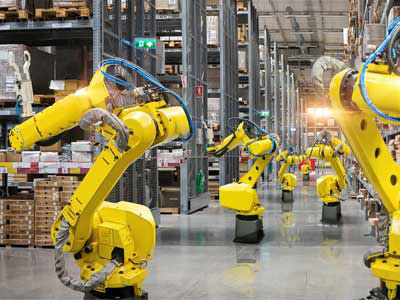Key Takeaway
Industrial robots come with some disadvantages. They need sophisticated operation and maintenance, requiring skilled workers. Training staff can be time-consuming and costly. Additionally, initial setup and integration into existing systems are expensive. Robots also lack flexibility; they may struggle with tasks requiring human-like dexterity and adaptability. If operations change, modifying robots can be challenging and costly. Furthermore, heavy reliance on robots can lead to job displacement, affecting workers. These factors highlight the complexities involved in implementing industrial robots.
High Initial Costs
High initial costs are a significant consideration for businesses, impacting financial planning and resource allocation. In industries like industrial automation, investing in equipment, technology, and infrastructure can require substantial upfront capital. These costs encompass purchasing machinery, implementing automation systems, and training personnel. Despite these challenges, businesses often benefit from improved efficiency, reduced labor costs, and enhanced production capabilities over the long term. Managing initial expenses strategically is crucial for maximizing returns on investment and ensuring sustainable growth in competitive markets.

Maintenance and Upkeep
Maintaining industrial robots is crucial for their efficient operation. Regular maintenance, software updates, and occasional repairs are necessary to keep them functioning optimally. These activities require skilled technicians, which adds to labor costs. For instance, the need for specialized knowledge to conduct regular checks and software updates ensures that robots perform tasks accurately and without interruptions. Furthermore, downtime for maintenance can disrupt production schedules, affecting overall productivity. Parts replacement can also be costly, especially for advanced robotic systems. Over time, these expenses can accumulate, making maintenance a significant ongoing cost for companies relying heavily on robotic automation.
To minimize downtime, companies often schedule maintenance during off-peak hours, but this doesn’t entirely eliminate the impact on production. Preventative maintenance is essential to avoid unexpected breakdowns that can cause longer downtimes and more severe disruptions. Therefore, a balance must be struck between the frequency of maintenance and the associated costs. Companies need to invest in reliable components and have a well-trained team to perform timely repairs. Despite the costs, proper maintenance ensures the longevity and efficiency of robotic systems, ultimately contributing to smoother operations and better ROI in the long run.
Technical Complexity
The technical complexity of industrial robots poses significant challenges, particularly for companies without a highly skilled technical workforce. Setting up, programming, and troubleshooting robots require specialized knowledge. Companies may need to hire expert personnel or invest in extensive training for existing employees, both of which can be costly and time-consuming. This complexity often necessitates customized solutions, as integrating robots with existing machinery and processes can be intricate. The initial setup and programming phase can be particularly daunting, requiring careful planning and execution to ensure seamless operation.
Furthermore, as production demands evolve, reprogramming and adjusting robots can introduce additional layers of complexity. This may lead to longer implementation times and potential operational hiccups, impacting overall efficiency. Companies need to consider these factors when planning their automation strategy. Investing in advanced training and partnering with experienced vendors can mitigate some of these challenges. However, the inherent complexity of robotic systems remains a barrier that companies must address to fully leverage the benefits of automation. Overcoming these technical hurdles is essential for maintaining competitive advantage in dynamic industries.
Job Displacement
A major disadvantage of industrial robots is job displacement. As robots take over tasks traditionally performed by humans, there’s a risk of reduced employment opportunities in certain sectors. Workers performing repetitive or dangerous tasks may find their roles obsolete, leading to workforce reductions. This transition can be challenging, requiring affected employees to seek new skills or employment opportunities. While automation can create new jobs in robot programming and maintenance, the shift can be difficult for many workers, leading to economic and social challenges, particularly in communities heavily reliant on manufacturing jobs.
To address this, companies and governments can invest in retraining programs to help displaced workers transition to new roles. Encouraging continuous learning and skill development can also mitigate the impact of job displacement. Despite the potential for job creation in new areas, the immediate effects of automation can be disruptive. It’s crucial for companies to communicate transparently with their workforce and provide support during the transition. Balancing the benefits of automation with the social responsibility towards employees is essential for sustainable growth.
Limited Flexibility
Industrial robots are often designed for specific tasks, limiting their flexibility. Unlike human workers who can adapt to various tasks and changing conditions, robots are generally optimized for particular operations. This rigidity can be a disadvantage in environments where production needs frequently change. Modifying robotic systems to accommodate new products or processes can be time-consuming and costly. For instance, reprogramming a robot for a different task may require extensive testing and validation, delaying production and increasing costs.
The lack of flexibility can hinder a company’s ability to quickly respond to market demands or innovate, impacting competitiveness. In dynamic industries, the ability to adapt quickly is crucial. Companies may need to invest in more versatile robotic systems or hybrid solutions that combine human and robotic labor to maintain flexibility. This approach can enhance adaptability while still leveraging the benefits of automation. Ultimately, achieving a balance between automation and flexibility is key to sustaining competitive advantage and meeting evolving market demands.
Conclusion
Industrial robots offer efficiency but have drawbacks. These include high initial costs, complex programming requirements, and limited adaptability to diverse tasks. Maintenance can also be costly, requiring specialized technicians. Safety concerns persist despite advancements, with risks to human operators. Integration with existing systems may pose challenges, impacting productivity. Despite these drawbacks, ongoing technological advancements aim to mitigate these issues, enhancing the role of robots in industrial settings.
